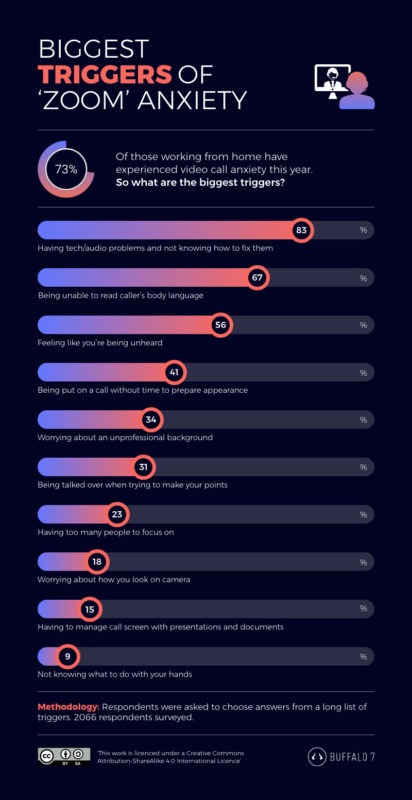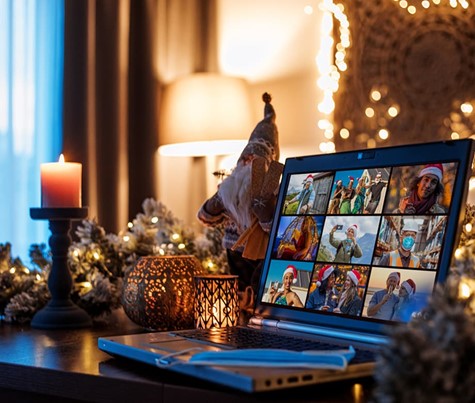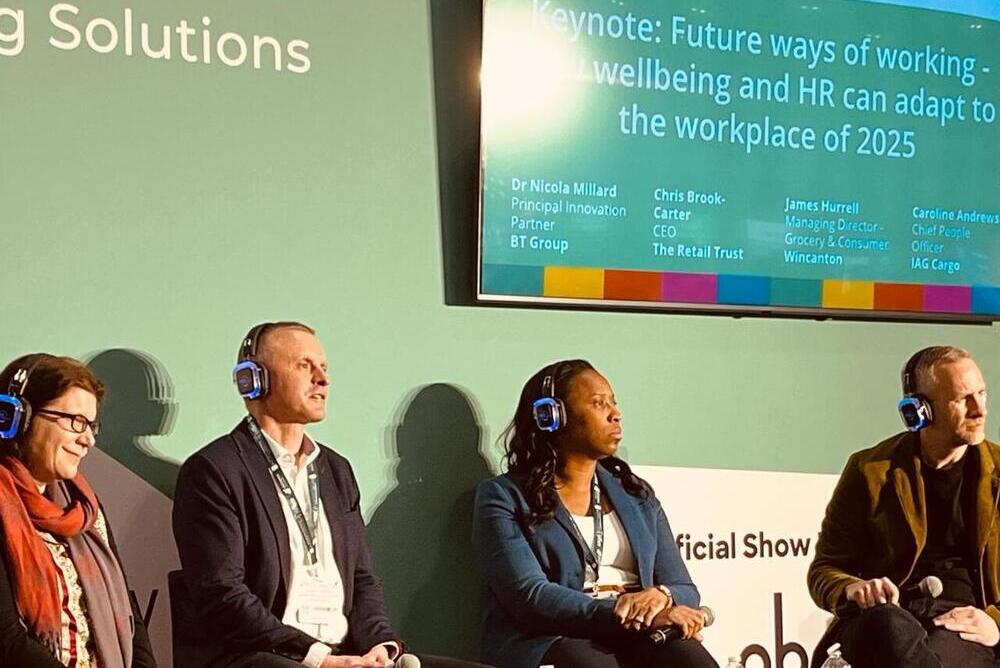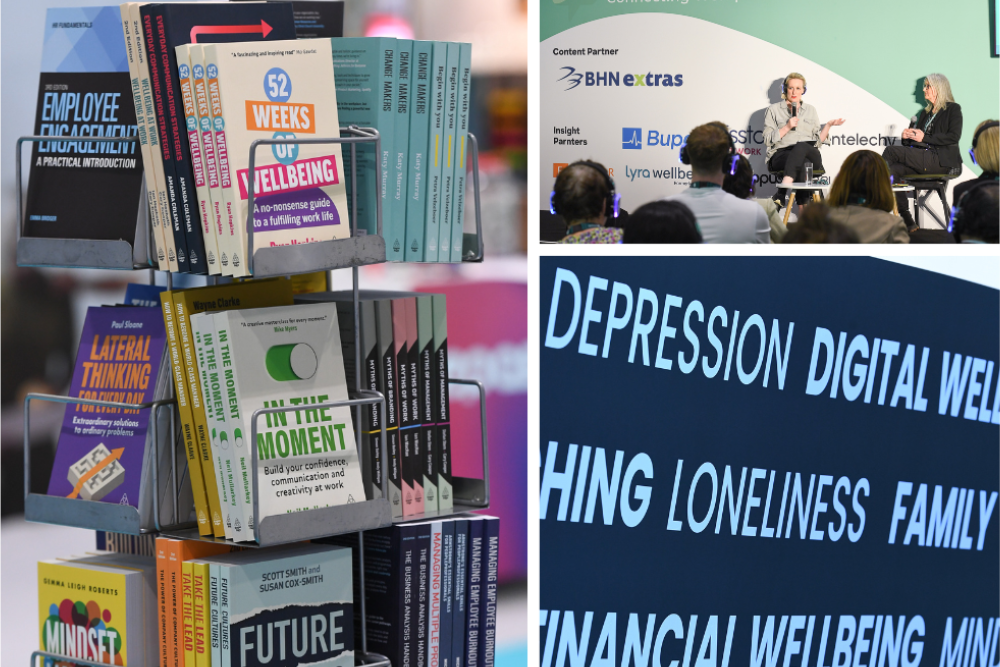As the pandemic has unfolded, so much of the working world has moved into the home. Video calling tools like Zoom, Teams and Hangouts have become vital for keeping organisations communicating.
But whilst such technology makes it easy to stay connected, the widespread adoption of video calling has brought its own set of challenges.
Many people feel unnatural and awkward when having to speak on camera, and for some, the pressure of having to perform so frequently on work video calls has lead to the rise of ‘Zoom anxiety’ – a physical feeling of panic when called upon to talk on video.
To find the biggest causes of Zoom Anxiety, presentation design agency Buffalo 7 surveyed 2066 people who work from home to reveal the biggest triggers.
Key insights from the research

Which Tasks are the Biggest Triggers of Video Call Anxiety?
- Presenting – 42%
- Interviews – 25%
- Client Meetings – 18%
- Team Catch Ups – 15%
When asked, ‘have you experienced Zoom or video call anxiety this year,’ an enormous 73% of respondents said yes. These findings are supported by Google, with a whopping 180% increase in UK residents searching for the term ‘Zoom Anxiety’ between March and November of this year.
Being on a video call requires more focus than a face-to-face chat or a regular phone call, which might be why 76% of people said they found that video calls made them more anxious than telephone calls, and 48% found them worse than face to face meetings.
Tips to help tackle video call anxiety
If you or one of your team members is suffering from video anxiety, follow some of these quick tips to help alleviate the problem:
- Limit Calls:Ask if this call is really necessary. It may be easier to add notes onto a shared doc, for example. Video calls may not always be the most efficient option.
- Cancel Cameras: Ask your boss if cameras are required on every call. If they are, try putting your camera on a side angle not face-on – you’ll focus less on yourself.
- Allow Recharge Time: Speak to others about only allowing a set amount of calls a day. Can there be a limit? If not, make sure there’s a set time between calls to recharge.
- Give Notice: Never drop anyone on a call without telling them in advance. If people have time to prepare, they’ll be more organised and less anxious.
- Communicate Concerns: Communicate! Talk to bosses, talk to teams – if there’s an issue, you never know who else is facing it too. Encourage conversations. Ask your boss for a private chat.
The full survey results can be found here.















